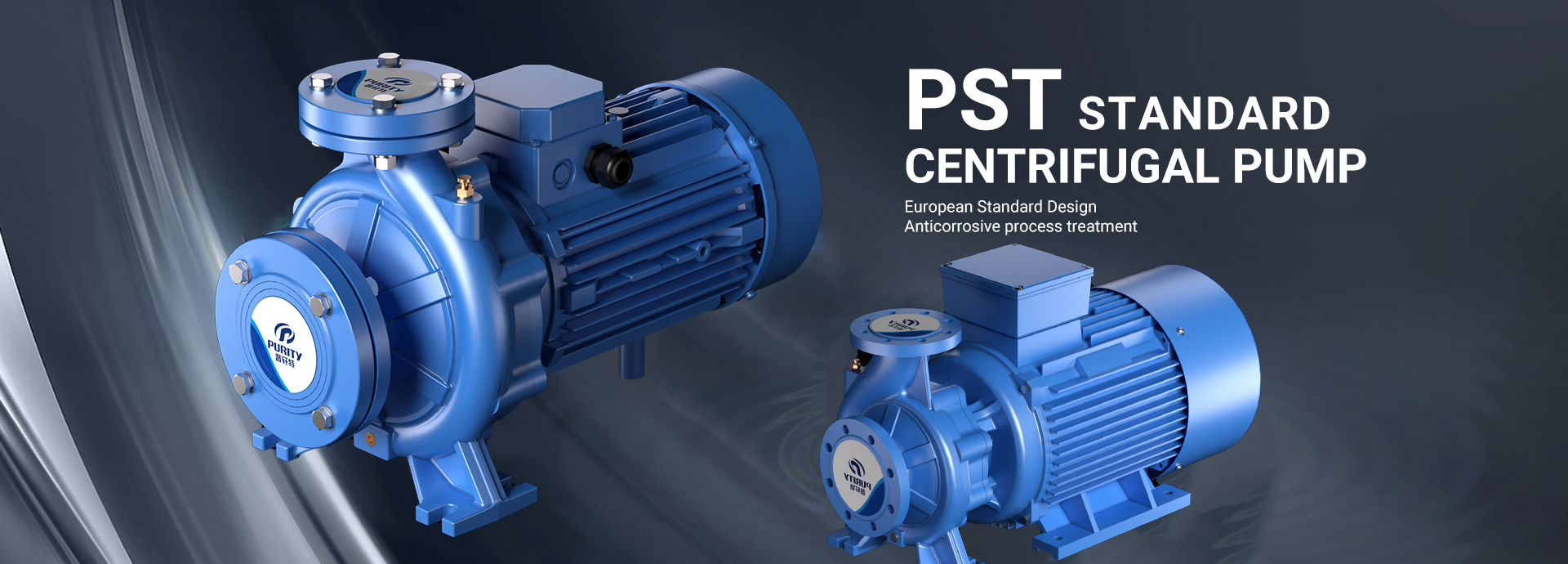Centrifugal pumps, known for their efficiency and versatility, are widely used in various industries to move liquids through systems. Despite their shared basic principle of operation—using centrifugal force to propel liquids—these pumps come in many different designs. Among the most common configurations are horizontal and vertical centrifugal pumps, each offering unique advantages and disadvantages depending on the application. Understanding the differences between these two types of pumps is essential for selecting the right one for your needs.

Picture|Purity Product
The primary distinction between horizontal and vertical centrifugal pumps lies in their orientation and structure.
Horizontal centrifugal pumps feature a horizontally placed shaft with the impeller rotating within a casing. This design allows the pump to be mounted on a base plate, with the motor and pump coupled together on the same level. The horizontal orientation often means that these pumps occupy more ground space. However, they offer flexibility in design, making them suitable for various applications, from water circulation to liquid transfer systems.
Vertical centrifugal pumps, on the other hand, have a vertically oriented shaft with the impeller suspended within the casing. This design allows the pump to be installed in-line, which can be particularly advantageous in settings where floor space is limited. The compact vertical structure is ideal for environments such as offshore platforms or sump applications where a small footprint is critical.
Space and installation requirements are critical factors when choosing between horizontal and vertical centrifugal pumps.
Horizontal pumps typically require more floor space due to their horizontal layout. They are often used in environments where space is abundant and easy access for maintenance is desired. The installation process for horizontal pumps can be more complex, requiring precise alignment of the pump, piping, and motor. However, once installed, these pumps are easier to maintain because their components are more accessible, requiring less disassembly.
In contrast, vertical pumps are designed to save space. They occupy a smaller footprint, making them suitable for areas with limited floor space. The installation of a vertical pump is generally simpler, as the pump can be suspended like a valve within piping systems, without the need for complex alignment. However, vertical pumps do require sufficient headroom, which can be a limitation in some settings.

Picture|Purity horizontal centrifugal pump PST
The performance characteristics of horizontal and vertical pumps also differ, particularly in terms of flow rate and Net Positive Suction Head (NPSH) requirements.
Horizontal pumps are typically capable of generating higher flow rates than their vertical counterparts. This makes them well-suited for large-scale applications where high flow rates are necessary, such as in water treatment plants or large-scale industrial processes. Additionally, horizontal pumps usually have a lower NPSH requirement, meaning they are more effective in situations where the liquid source is at a lower level, reducing the risk of cavitation.
Vertical pumps, while generally supporting lower flow rates, excel in applications where space constraints and high NPSH requirements are present. The vertical design allows for a more flexible NPSH configuration, enabling the pump to handle a wider range of applications, including those involving high-temperature or high-pressure liquids.
When it comes to maintenance, horizontal pumps have a clear advantage due to their accessibility. The horizontal orientation allows for easier inspection and replacement of parts, leading to reduced downtime during maintenance activities. Horizontal pumps are also versatile in terms of the types of drivers they can use, including electric motors, diesel engines, and gearboxes.
Vertical pumps, though more challenging to maintain, are preferred in environments where space is at a premium. However, they are typically limited to being driven by electric motors, which might not be suitable for all applications. The vertical design also presents challenges in handling liquids with high concentrations of dissolved gases, which can lead to mechanical seal failures and increased maintenance needs.

Picture|Purity vertical centrifugal pump PTD
Choosing between a horizontal and vertical centrifugal pump depends largely on the specific needs of your application. Horizontal pumps are ideal for scenarios requiring high flow rates, lower NPSH, and easier maintenance, especially in settings where space is not a concern. Vertical pumps, on the other hand, are better suited for applications where floor space is limited, and high NPSH is required, though they may involve more complex maintenance.
Ultimately, understanding the design, space, and operational differences between these two types of pumps will help ensure that you select the most appropriate pump for your system, optimizing performance and longevity in the process.